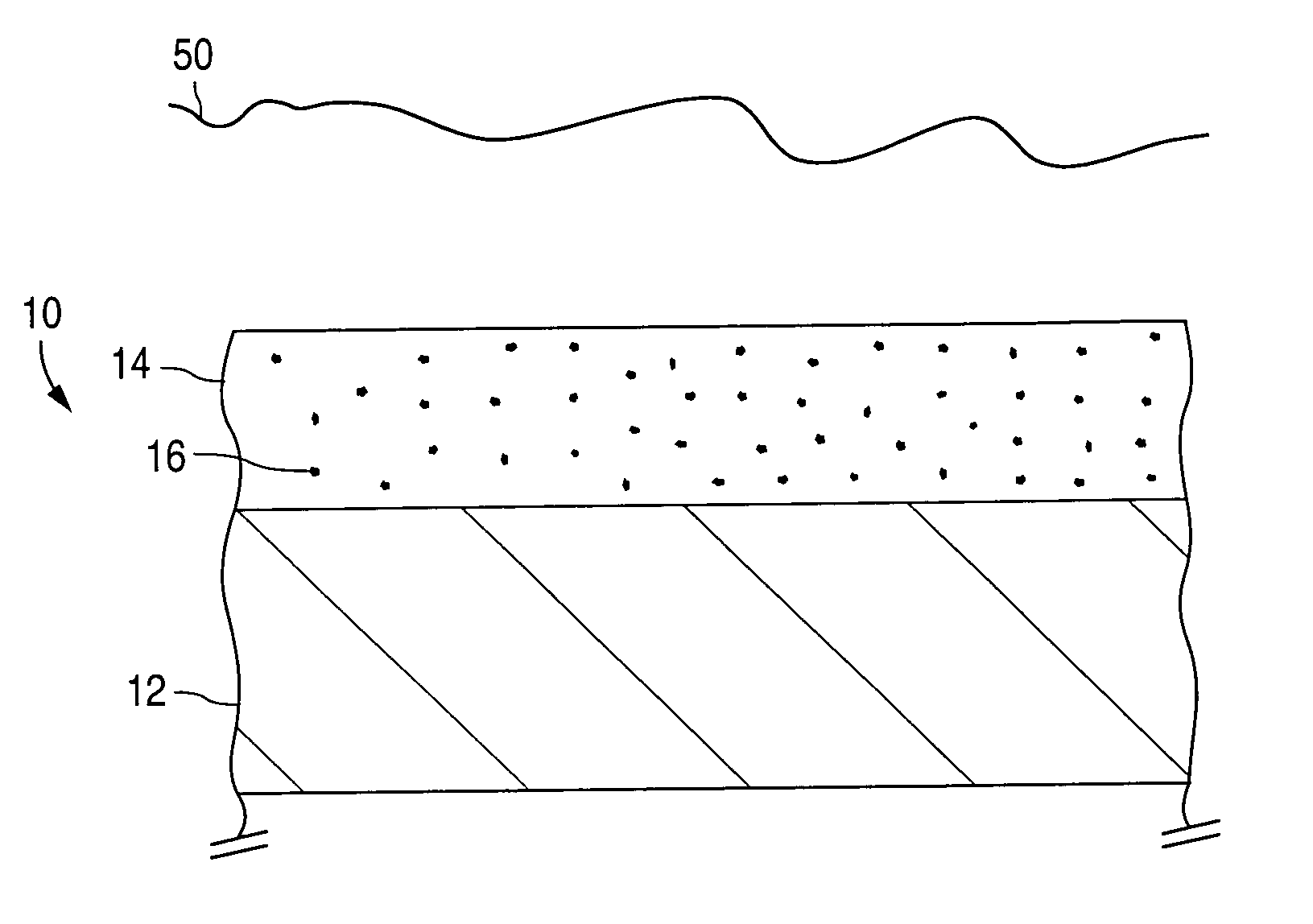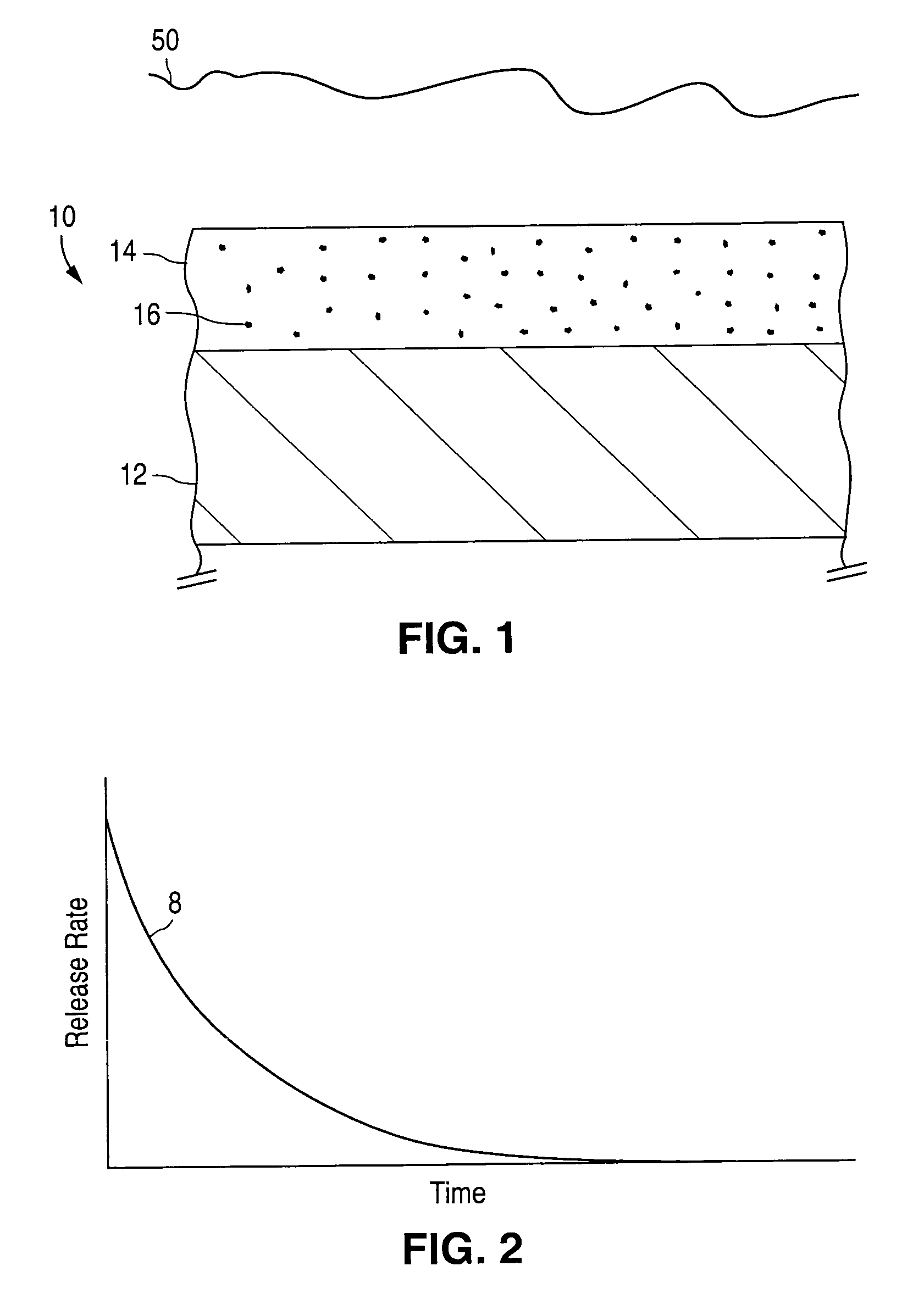Barriers for polymer-coated implantable medical devices and methods for making the same
a technology of polymer coating and barriers, applied in the field of implantable medical devices, can solve the problems of low release rate, adverse or toxic side effects of patients, and high variability in the rate of drug release, so as to reduce or prevent cell proliferation, inflammation or thrombosis
- Summary
- Abstract
- Description
- Claims
- Application Information
AI Technical Summary
Benefits of technology
Problems solved by technology
Method used
Image
Examples
example 1
Use of SiOx Film as a Barrier Coating to Reduce the Rate of Release of Nitric Oxide from a Polymer Coated Medical Device
[0075]Healthy endothelial cells located along the intima (the innermost layer of cells lining the blood vessels) produce a nearly constant supply of nitric oxide. Nitric oxide molecules signal the surrounding smooth muscle cells. We currently believe nitric oxide molecules also prevent the smooth muscle cells from migrating and / or proliferating, which, it is postulated, would reduce the incidence of restenosis following PTCA. To be effective in local delivery, nitric oxide would ideally be released over a period of weeks (e.g., four to eight weeks, generally, and in some cases, up to twelve weeks, depending on the patient). In accordance with one embodiment of the invention, a homogeneous film of non-stoichiometric silicon dioxide (known as SiOx) is deposited as barrier coating 28 on first layer 24. First layer 24 contains drug 16, which in this case is nitric oxid...
example 2
Use of Discontinuous Barrier Coating to Reduce the Rate of Release of Dexamethasone from a Silicione Polymer
[0078]Line A of FIG. 5 illustrates the release of dexamethasone acetate (C22H29FO5), a synthetic steroid used as an anti-inflammatory agent, from collars made from a silicone polymer over a period of 25 days when the polymeric collars were immersed in saline solution at a temperature of 37° C. Each polymeric collar was loaded with approximately 0.25 mg of dexamethasone acetate. A total of twenty polymeric collars were tested, and the averaged results are shown. After 25 days, a total of 0.018 mg of dexamethesone had been released, on average, from each polymeric collar.
[0079]Assuming nucleation sites 30 of a barrier material were deposited on the silicone polymer in a manner similar to that illustrated in FIG. 4, so as to cover 50% of the available surface area, then the release rate would be reduced by 50%, with the result that the drug release curve would be predicted to app...
example 3
Method for Producing a Titanium Oxide Barrier Coating on a Polymer-Coated Medical Device by Alkoxide Hydrolysis
[0081]One method by which the embodiment illustrated in FIG. 6 may be produced is alkoxide hydrolysis. If an implantable medical device having a first layer 24 is exposed to a humid environment and then immersed in a metal alkoxide solution, within seconds, metal oxide will be formed at or near the top surface of first layer 24 by reaction of the alkoxide with the water in the polymer coating. As long as the polymer contains some moisture (e.g., at least 1% by weight), the reaction can go forward. Examples of suitable metal alkoxides include titanium ethoxide and titanium propoxide.
[0082]A solution of titanium ethoxide is created in dry ethanol at concentrations from about 0.1% to 10%. A polymer coated stent is exposed to an environment with controlled relative humidity between 20% and 100% for between 0.5 and 60 minutes. The stent is then immersed in the alkoxide solution ...
PUM
| Property | Measurement | Unit |
|---|---|---|
| residence time | aaaaa | aaaaa |
| residence time | aaaaa | aaaaa |
| residence time | aaaaa | aaaaa |
Abstract
Description
Claims
Application Information
 Login to View More
Login to View More - R&D
- Intellectual Property
- Life Sciences
- Materials
- Tech Scout
- Unparalleled Data Quality
- Higher Quality Content
- 60% Fewer Hallucinations
Browse by: Latest US Patents, China's latest patents, Technical Efficacy Thesaurus, Application Domain, Technology Topic, Popular Technical Reports.
© 2025 PatSnap. All rights reserved.Legal|Privacy policy|Modern Slavery Act Transparency Statement|Sitemap|About US| Contact US: help@patsnap.com



